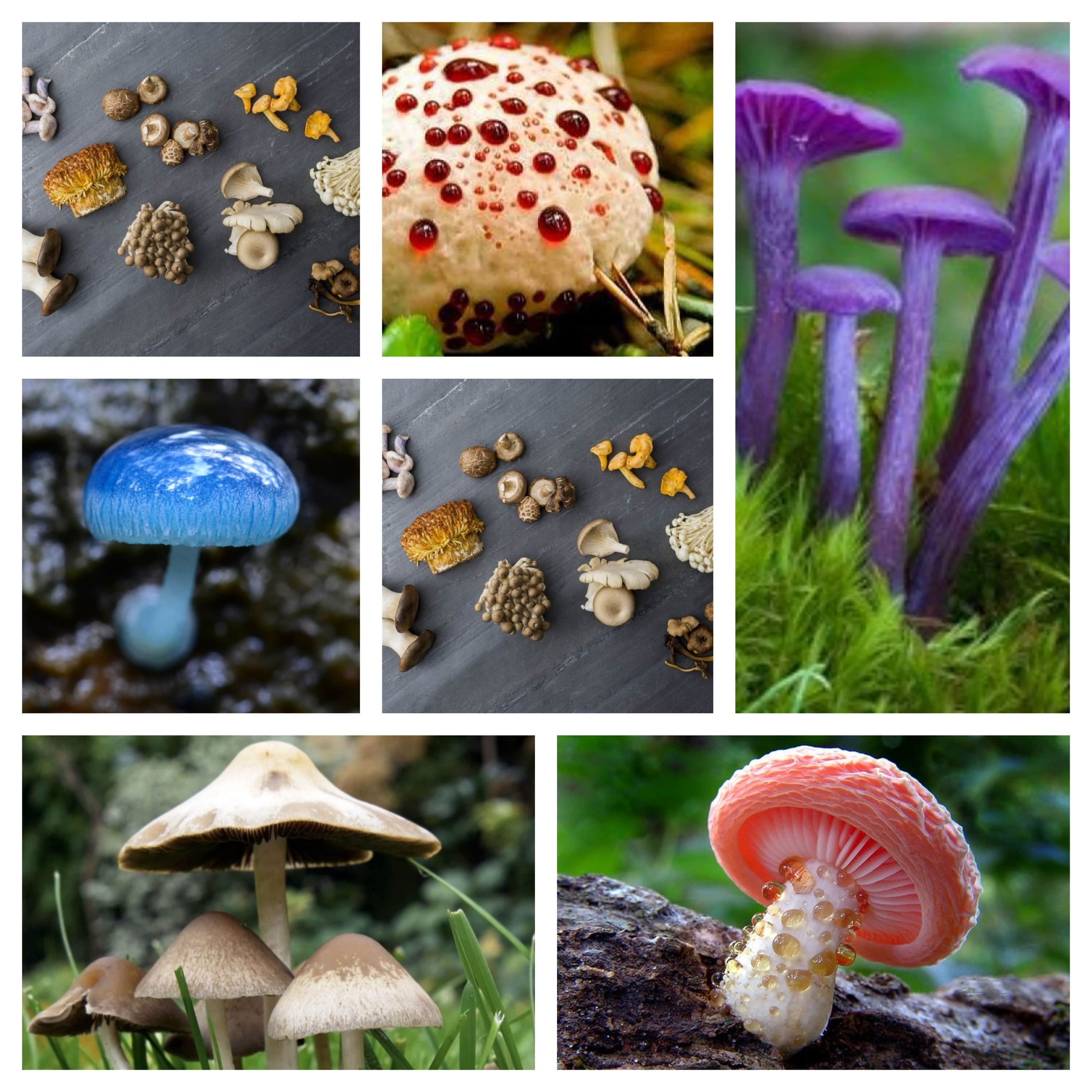Mushrooms are intriguing organisms that have fascinated humans for centuries. They come in a vast array of shapes, sizes, and colors, making them a captivating subject for nature enthusiasts and foragers. However, the world of mushrooms can also be a perilous one, as many species are toxic and can lead to severe health complications if consumed. This comprehensive guide on mushroom identification will equip you with the knowledge and tools necessary to differentiate between edible and poisonous mushrooms, ensuring your safety and enhancing your appreciation of these fungi wonders.
The Fascinating World of Mushrooms
Mushrooms, scientifically known as fungi, belong to the kingdom Fungi. They are neither plants nor animals but constitute a unique category of life forms. Mushrooms serve essential ecological roles, breaking down organic matter and recycling nutrients in forest ecosystems. They come in various forms, including caps, stems, and gills, each with distinct characteristics that aid in identification.
Understanding the Importance of Mushroom Identification
Mushroom identification is not merely a hobby; it’s a critical skill for anyone interested in foraging for wild mushrooms. Accurate identification is the key to distinguishing between edible delicacies and potentially deadly specimens. Here are some reasons why mushroom identification is crucial:
- Safety: Misidentifying a toxic mushroom can lead to severe health issues or even death. By honing your identification skills, you can avoid dangerous mistakes.
- Culinary Adventure: Edible mushrooms are a culinary delight, adding unique flavors and textures to dishes. Identifying them allows you to enjoy a variety of delectable meals.
- Environmental Impact: Understanding mushroom species contributes to a deeper appreciation of the ecosystem. Some mushrooms are indicators of environmental health, making them valuable for ecological studies.
The Three Pillars of Mushroom Identification
When it comes to mushroom identification, there are three essential pillars to consider: physical characteristics, habitat, and spore print.
1. Physical Characteristics
Cap Shape and Size
One of the first features to examine is the cap of the mushroom. Note its shape, size, and color. Caps can be flat, convex, or concave and range from a few centimeters to over a foot in diameter.
Stem Attributes
The stem, or stipe, provides valuable information. Observe its height, thickness, and color. Some mushrooms have a distinct ring or bulbous base on the stem, which aids in identification.
Gills or Pores
Examine the underside of the cap to determine if the mushroom has gills or pores. Gills are thin, blade-like structures, while pores resemble small holes. Both characteristics are essential for identification.
2. Habitat
Mushrooms thrive in specific environments. Take note of where you find the mushroom—whether it’s on the forest floor, on decaying wood, or near certain tree species. These habitat clues are significant for identification.
3. Spore Print
Obtaining a spore print is a fundamental step in identification. To do this, place the cap, gills down, on a white piece of paper for several hours. The spores will drop onto the paper, revealing their color, which is crucial for identifying the species.
Common Edible Mushrooms
Now that we’ve covered the basics of mushroom identification, let’s delve into some common edible mushrooms that you may encounter on your foraging adventures.
1. Chanterelles (Cantharellus cibarius)
Physical Characteristics: Chanterelles have a distinctive golden-yellow to orange color with a funnel-shaped cap and a mild, fruity aroma. They lack true gills, instead featuring shallow, wavy ridges.
Habitat: Look for chanterelles in hardwood forests, often near oak, beech, and pine trees.
2. Morel Mushrooms (Morchella spp.)
Physical Characteristics: Morels are easily recognizable by their honeycomb-like appearance. They have a hollow stem and a cone-shaped cap with pits and ridges.
Habitat: Morels prefer disturbed ground, such as burned areas, and are often found near dead or decaying trees.
3. Shiitake Mushrooms (Lentinula edodes)
Physical Characteristics: Shiitake mushrooms have a brown, umbrella-shaped cap with white edges and a woody stem. They are commonly cultivated for culinary use.
Habitat: Shiitakes are typically cultivated on hardwood logs or sawdust.
Conclusion
Mushroom identification is a fascinating and essential skill for anyone interested in exploring the world of fungi. By understanding the physical characteristics, habitat, and spore prints of mushrooms, you can safely forage for edible varieties and appreciate the intricate beauty of these organisms. Remember that safety should always be your top priority, and when in doubt, consult with an expert mycologist before consuming any wild mushrooms.
Frequently Asked Questions (FAQs)
1. Are there any universal rules for identifying edible mushrooms?
While some general rules can help with mushroom identification, it’s essential to remember that there are exceptions. Always consult field guides or experts for specific guidance, especially when foraging for wild mushrooms.
2. Can I rely solely on online resources for mushroom identification?
Online resources can be helpful, but they should complement, not replace, field guides and expert advice. The risk of misidentification is high, so it’s best to cross-reference information from multiple sources.
3. What should I do if I suspect I’ve consumed a toxic mushroom?
If you believe you’ve ingested a toxic mushroom, seek immediate medical attention. Take a sample or photograph of the mushroom if possible to aid in identification and treatment.
Now that you’re equipped with knowledge on mushroom identification, go forth and explore the world of fungi with confidence and caution.


